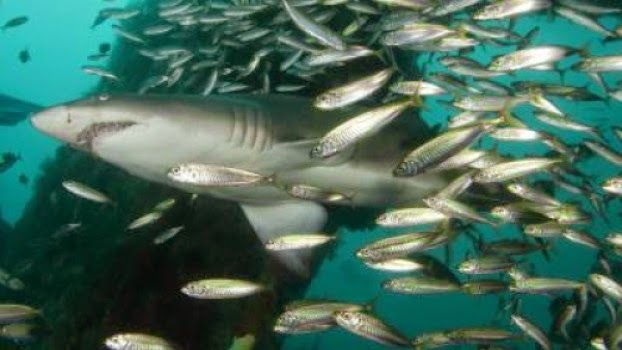
A new study shows that some shark species may be able to cope with the rising salinity of Arctic waters that may come with rising temperatures.
The Arctic today is best known for its tundra and polar bear population, but it wasn’t always like that. Roughly 53 to 38 million years ago during what is known as the Eocene epoch, the Arctic was more similar to a huge temperate forest with brackish water, home to a variety of animal life, including ancestors of tapirs, hippo-like creatures, crocodiles and giant tortoises. Much of what is known about the region during this period comes from well-documented terrestrial deposits. Marine records have been harder to come by.
A new study of shark teeth taken from a coastal Arctic Ocean site has expanded the understanding of Eocene marine life. Leading the study was Sora Kim, the T.C. Chamberlin Postdoctoral Fellow in Geophysical Sciences at the University of Chicago, in coordination with Jaelyn Eberle at the University of Colorado, Boulder, and their three co-authors. Their findings were published online June 30 by the journal Geology.
The Arctic is of special interest today because it is increasing in temperature at twice the global rate. According to Kim, past climate change in the Arctic can serve as a proxy to better understand our current climate change and aid future predictions. The Eocene epoch, she said, is like a “deep-time analogue for what’s going to happen if we don’t curb CO2 emissions today, and potentially what a runaway greenhouse effect looks like.”
Before this study, marine records primarily came from deep-sea cores pulled from a central Arctic Ocean site, the Lomonosov Ridge. Kim and Eberle studied shark teeth from a new coastal site on Banks Island. This allowed them to better understand the changes in ocean water salinity across a broader geographic area during a time of elevated global temperatures. Shark teeth are one of the few available vertebrate marine fossils for this time period. They preserve well and are incredibly abundant.
To arrive at their results, Kim isolated and measured the mass ratio of oxygen isotopes 18 to 16 found in the prepared enameloid (somewhat different from human tooth enamel) of the shark teeth. Sharks constantly exchange water with their environment, so the isotopic oxygen ratio found in the teeth is directly regulated by water temperature and salinity. With assumptions made about temperatures, the group was able to focus on extrapolating salinity levels of the water.
The results were surprising. “The numbers I got back were really weird,” Kim said. “They looked like fresh water.” The sand tiger sharks she was studying are part of a group called lamniform sharks, which prefer to stay in areas of high salinity.
“As more freshwater flows into the Arctic Ocean due to global warming, I think we are going to see it become more brackish,” said Eberle, associate professor of geological sciences at CU-Boulder. “Maybe the fossil record can shed some light on how the groups of sharks that are with us today may fare in a warming world.”
Because the teeth are 40 to 50 million years old, many tests were run to eliminate any possible contaminates, but the results were still the same. These findings suggest that sharks may be able to cope with rises in temperature and the subsequent decrease of water salinity. It has long been known that sharks are hardy creatures. They have fossil records dating back some 400 million years, surviving multiple mass extinctions, and have shown great ecological plasticity thus far.
Additionally, these results provide supporting evidence for the idea that the Arctic Ocean was most likely isolated from global waters.
“Through an analysis of fossil sand tiger shark teeth from the western Arctic Ocean, this study offers new evidence for a less salty Arctic Ocean during an ancient ‘greenhouse period,'” said Yusheng (Chris) Liu, program director in the National Science Foundation (NSF)’s Division of Earth Sciences, which co-funded the research with NSF’s Division of Polar Programs. “The results also confirm that the Arctic Ocean was isolated during that long-ago time.”
While Kim has hopes to expand her research both geographically and in geologic time in an effort to better understand the ecology and evolution of sharks, she remarked that “working with fossils is tricky because you have to work within the localities that are preserved. “You can’t always design the perfect experiment.”
Note : The above story is based on materials provided by University of Chicago.










